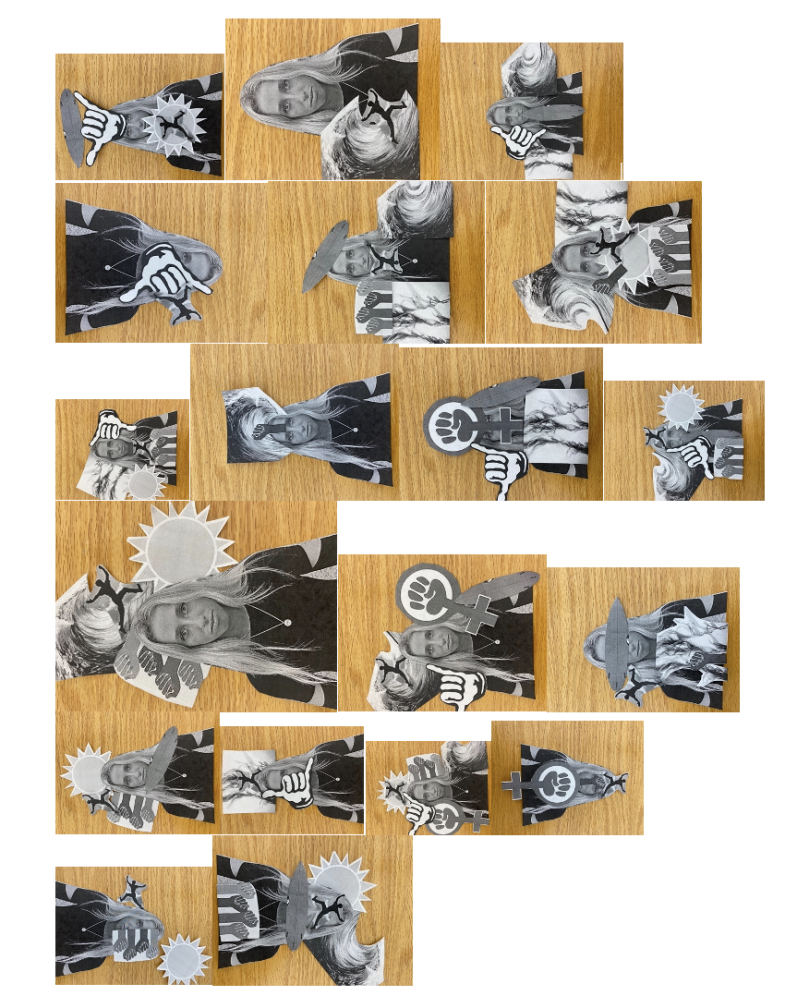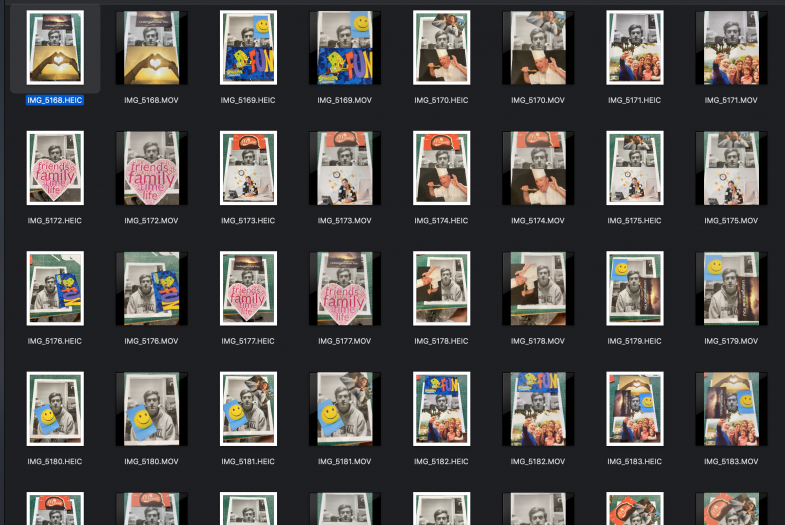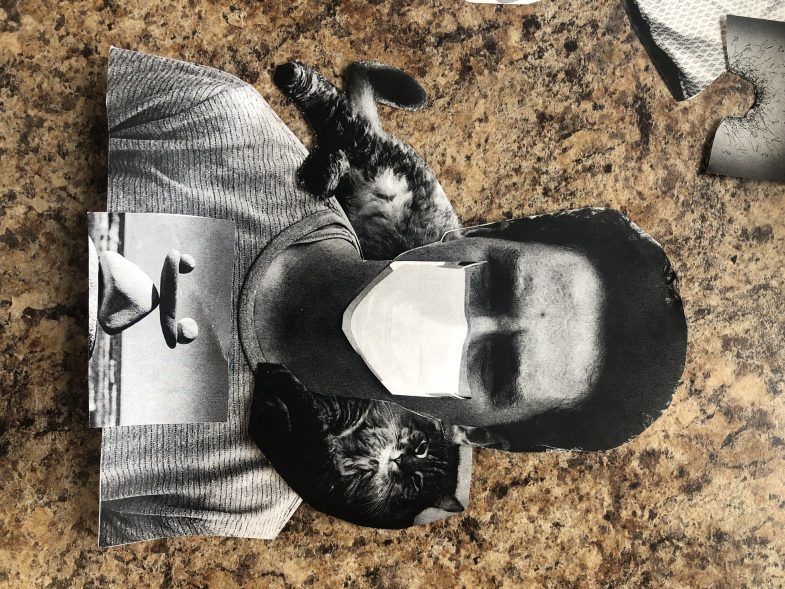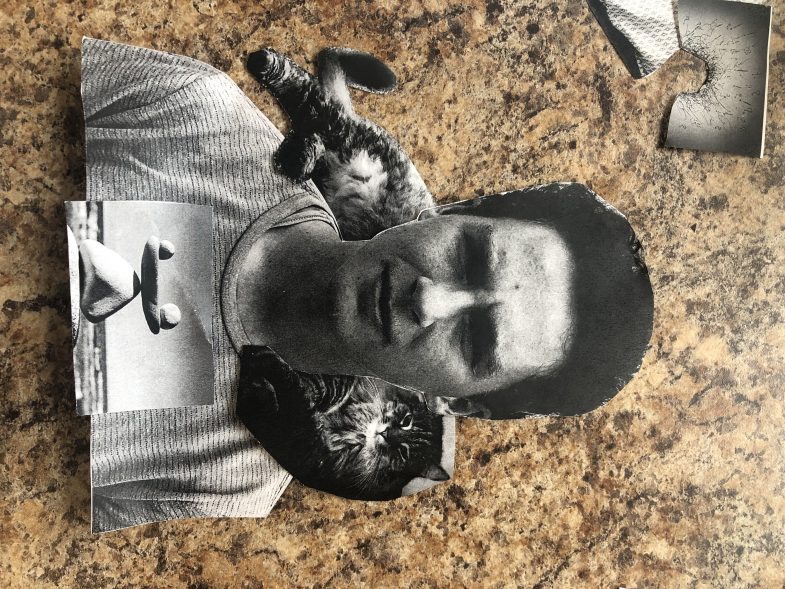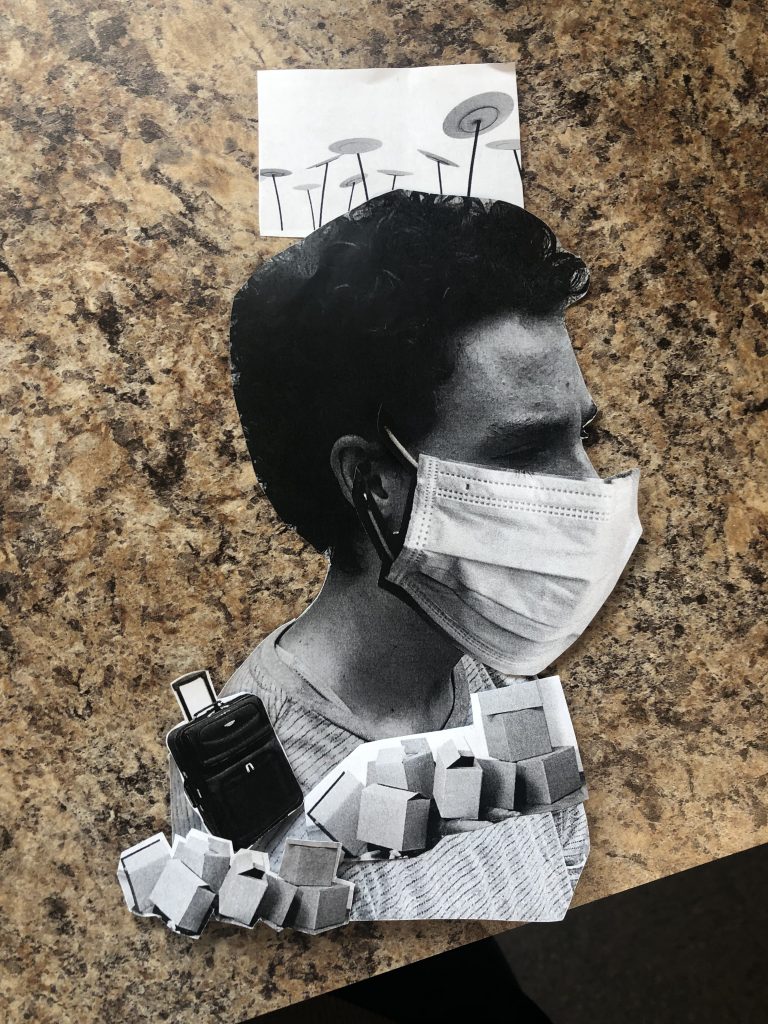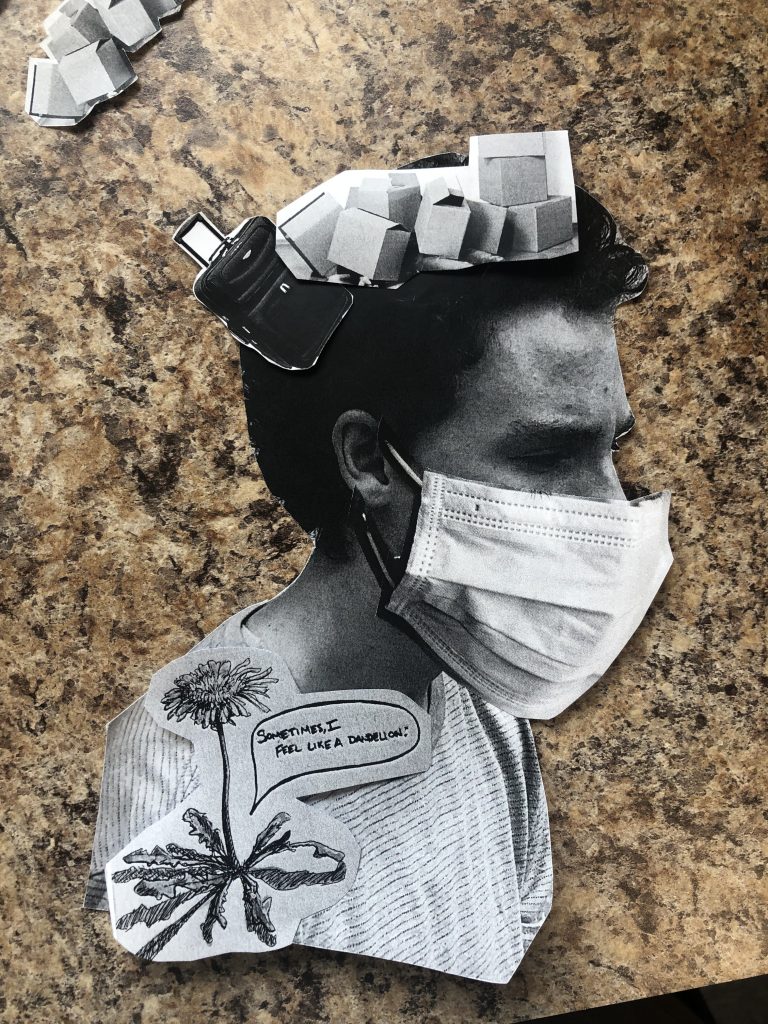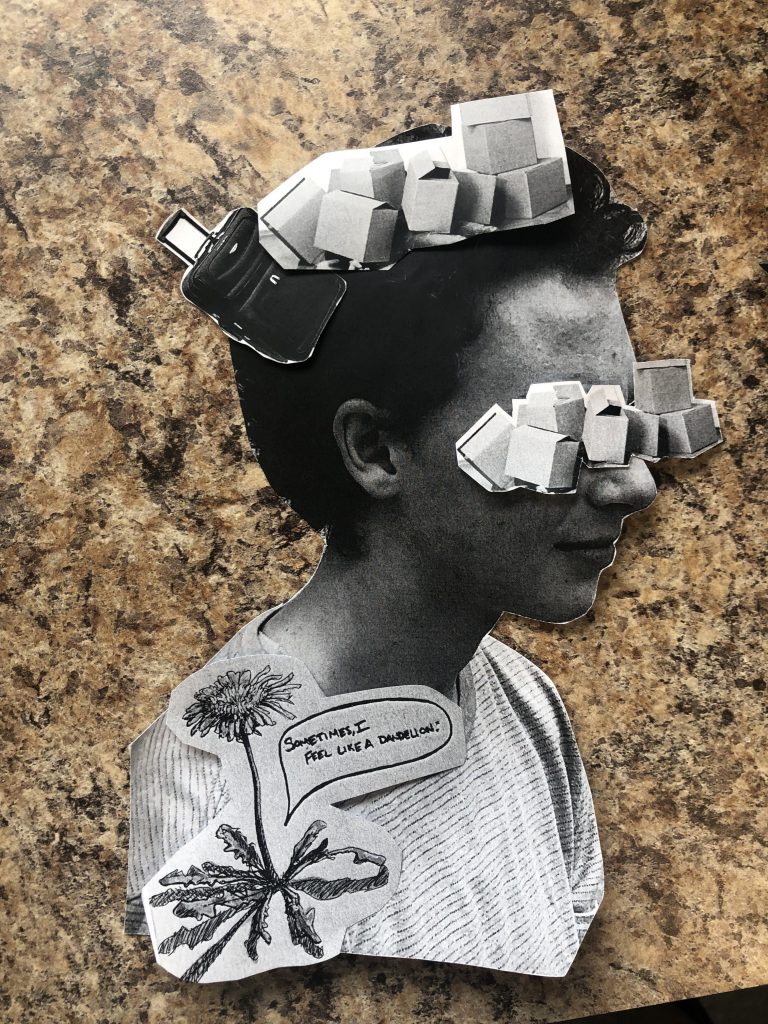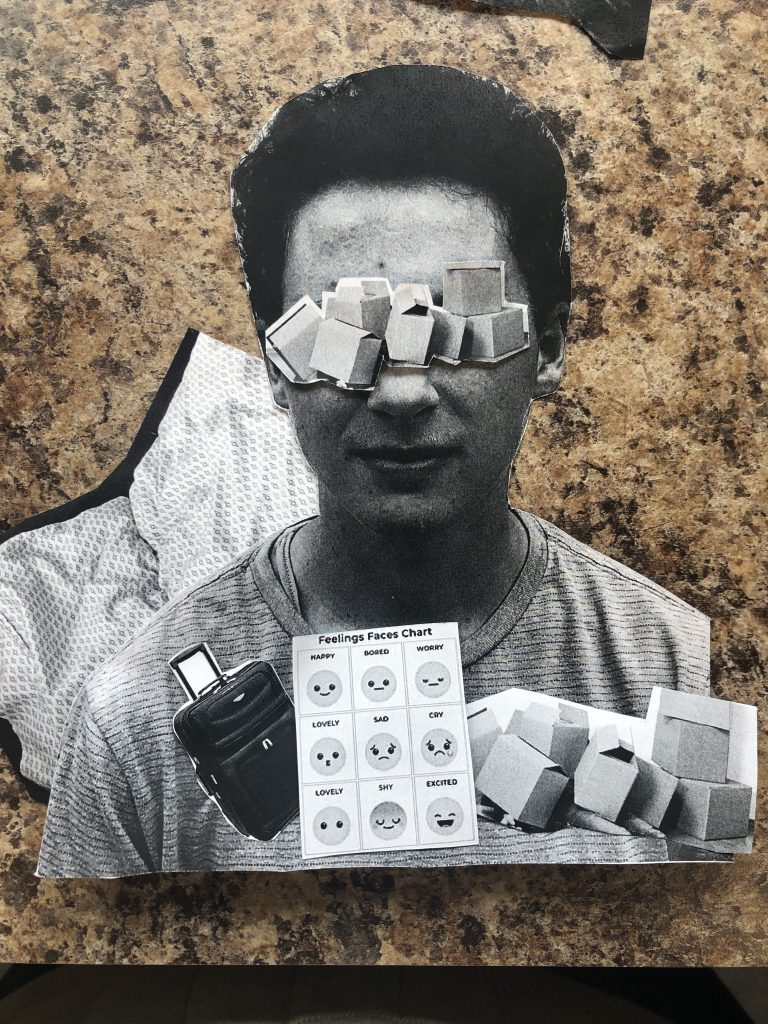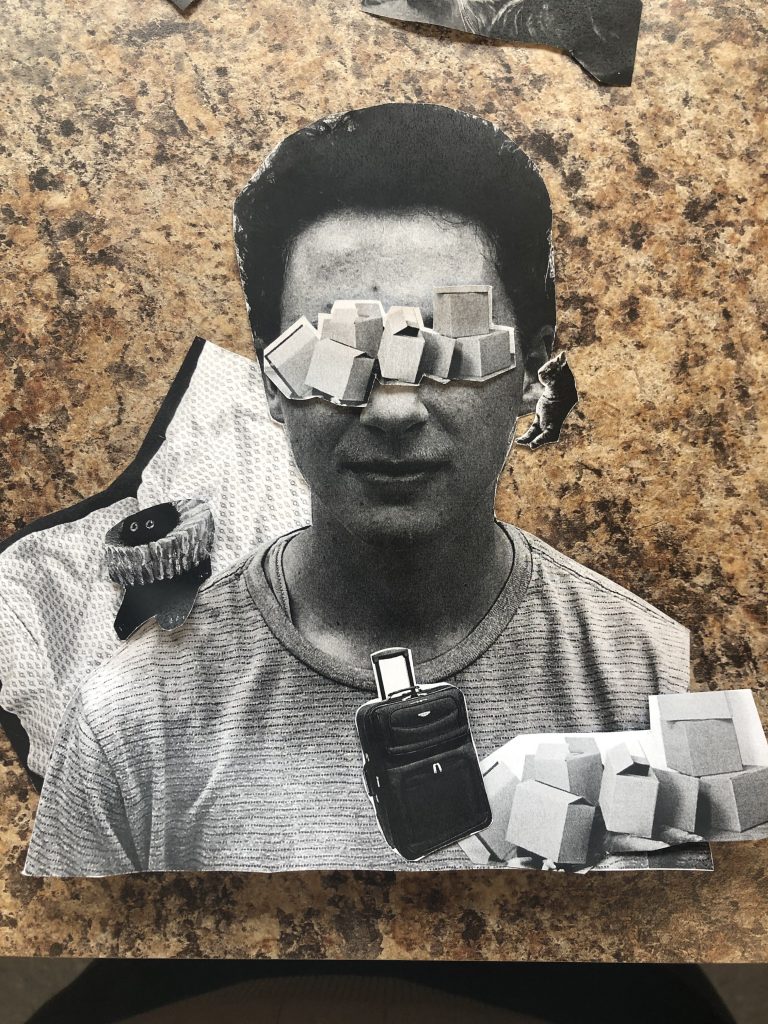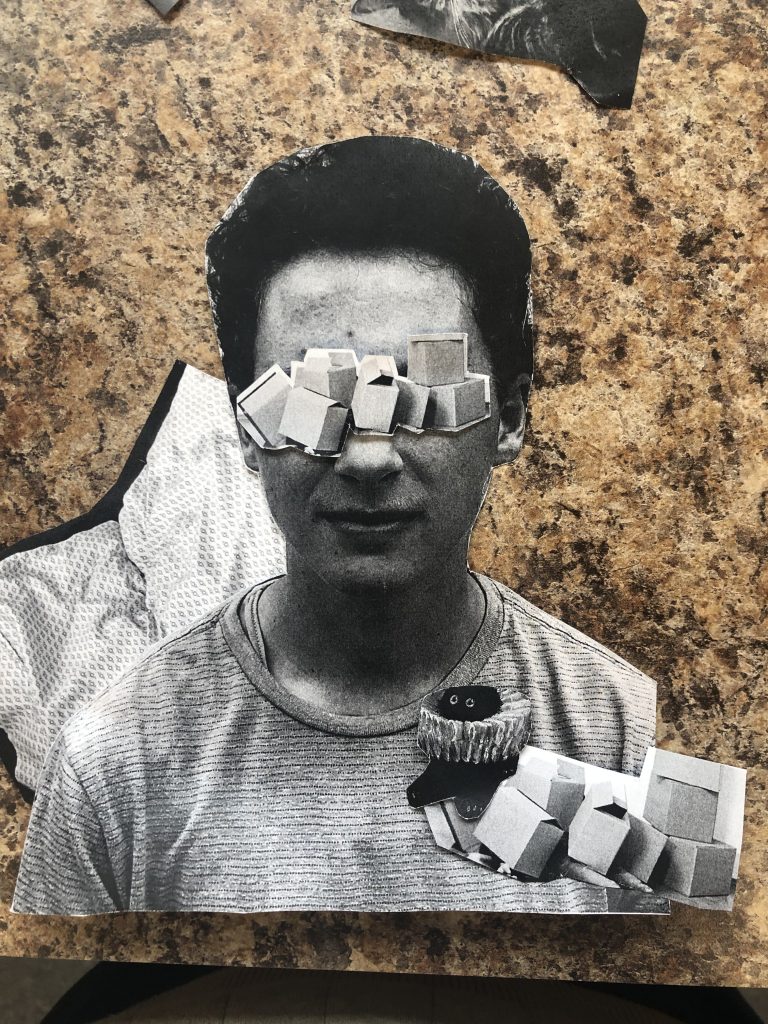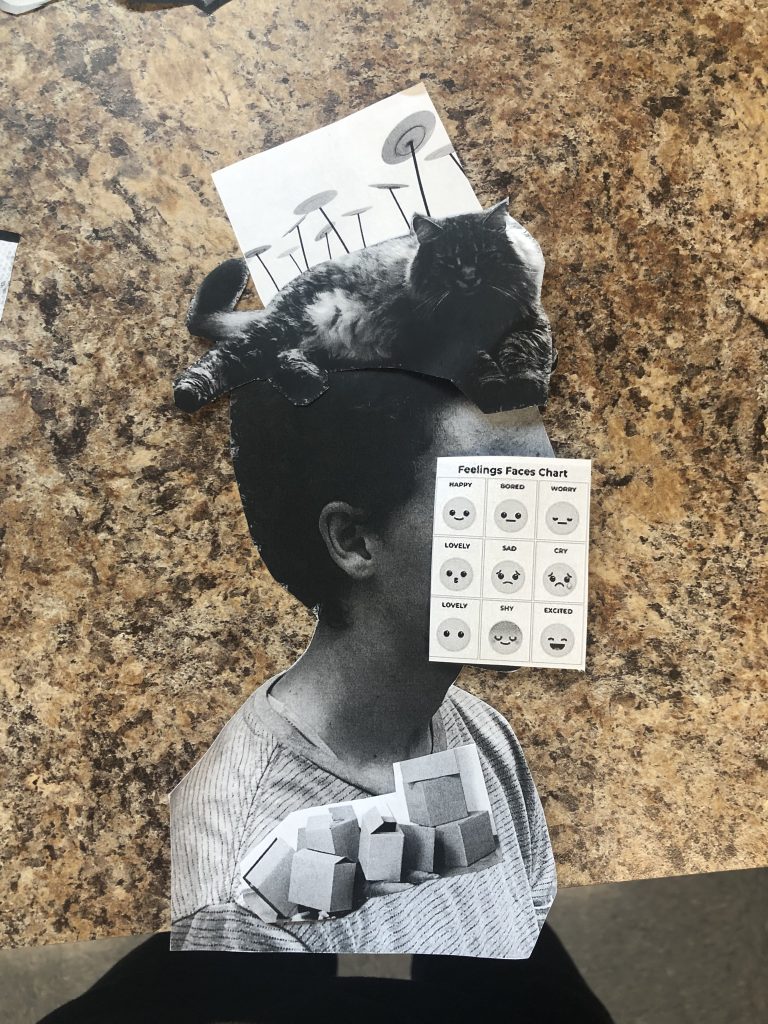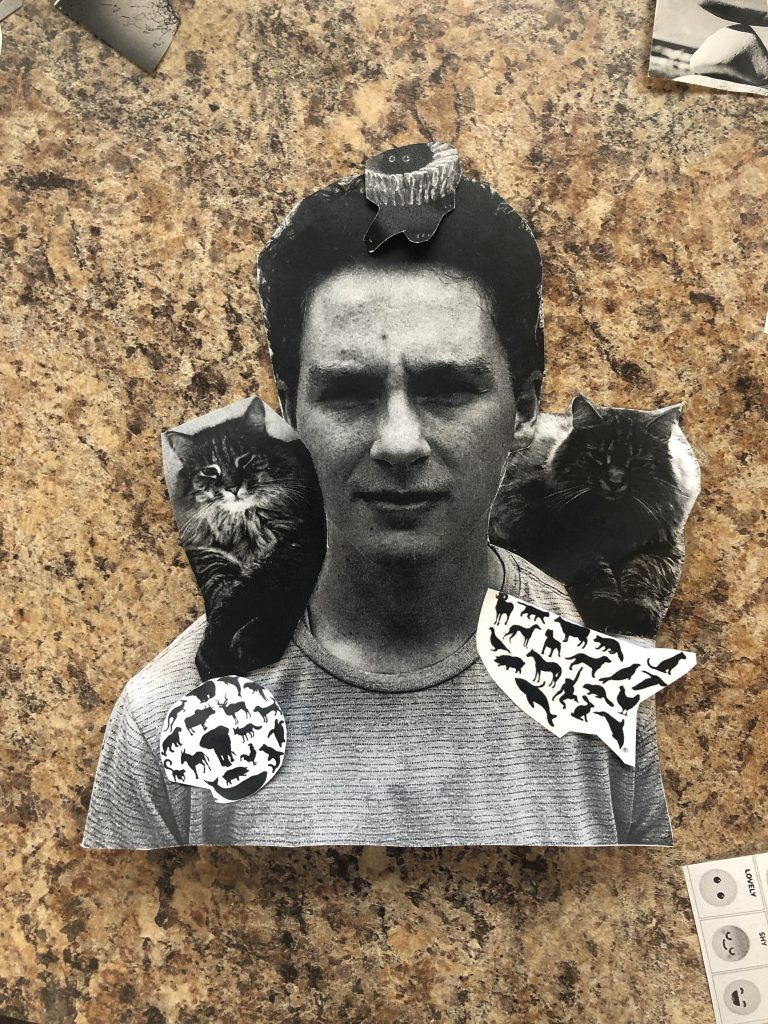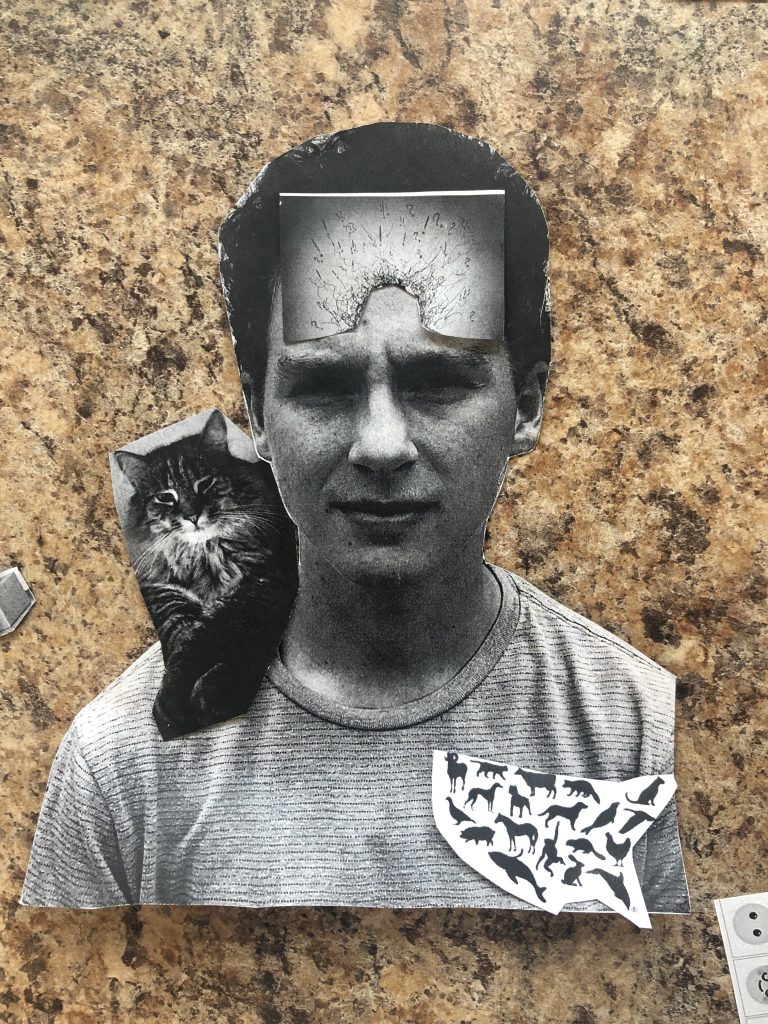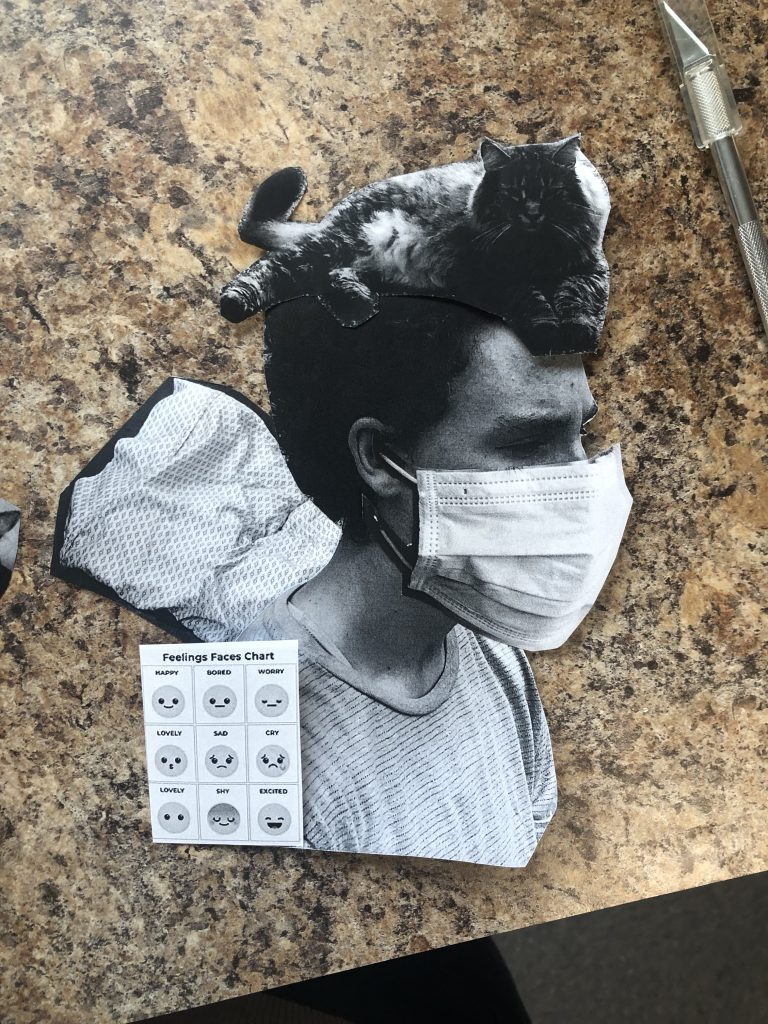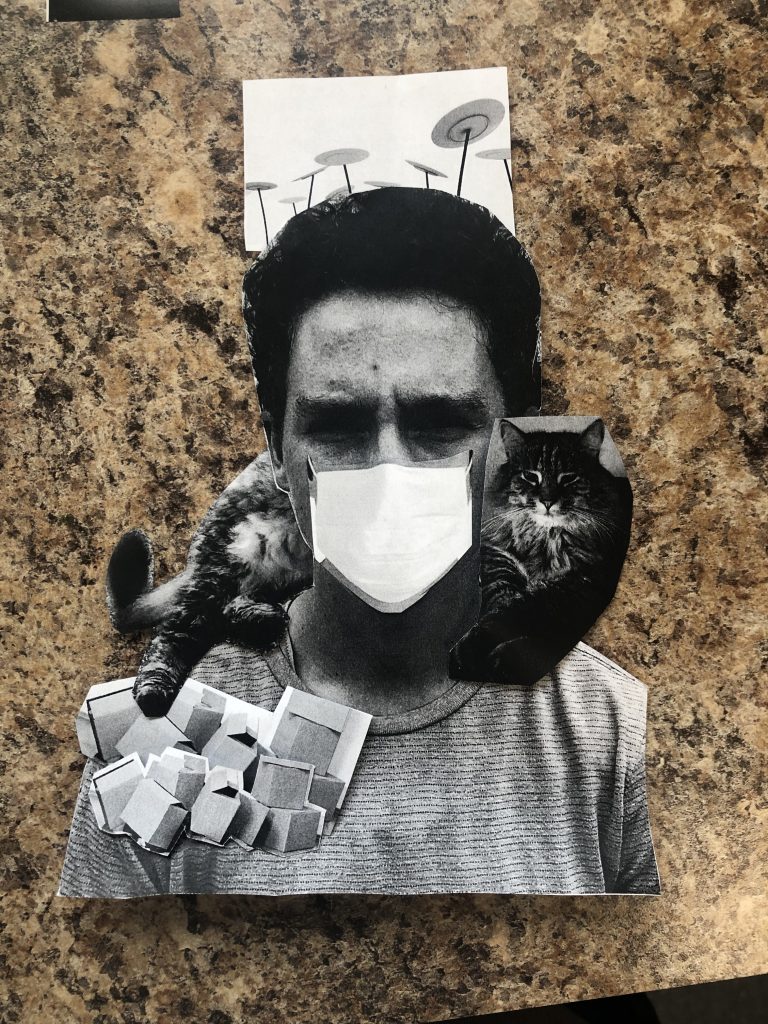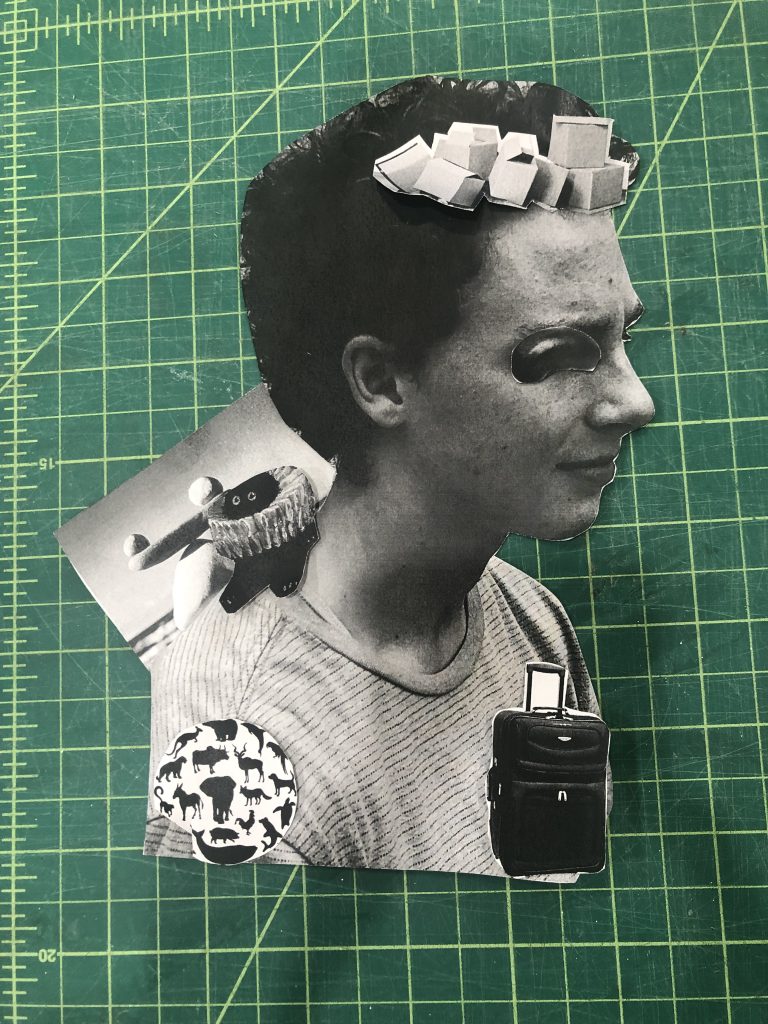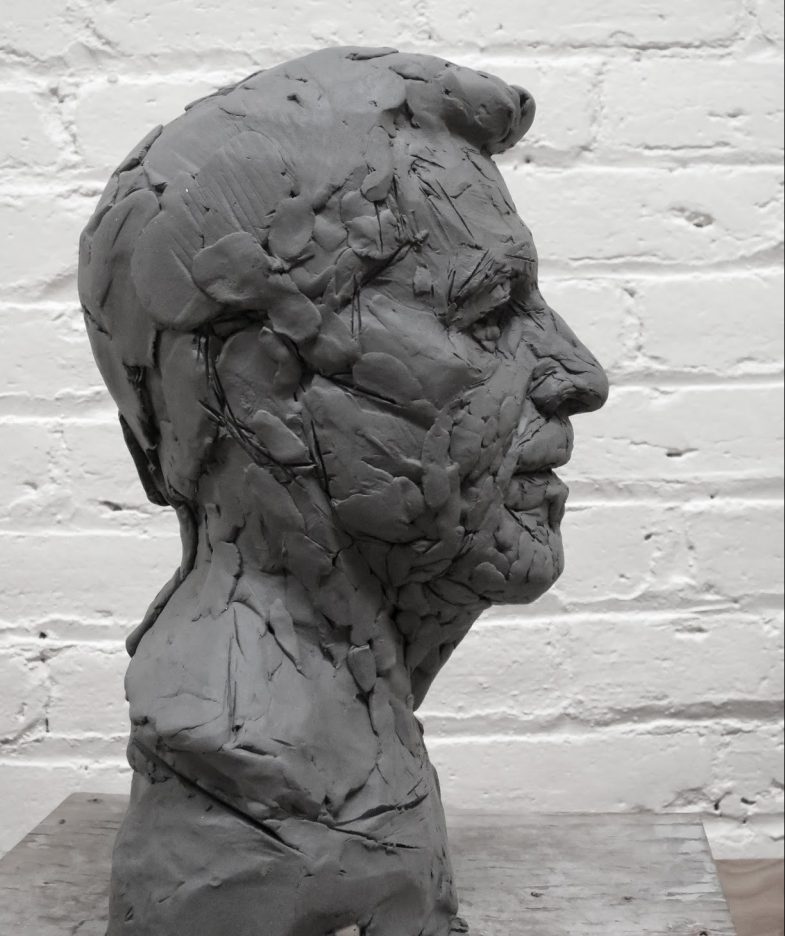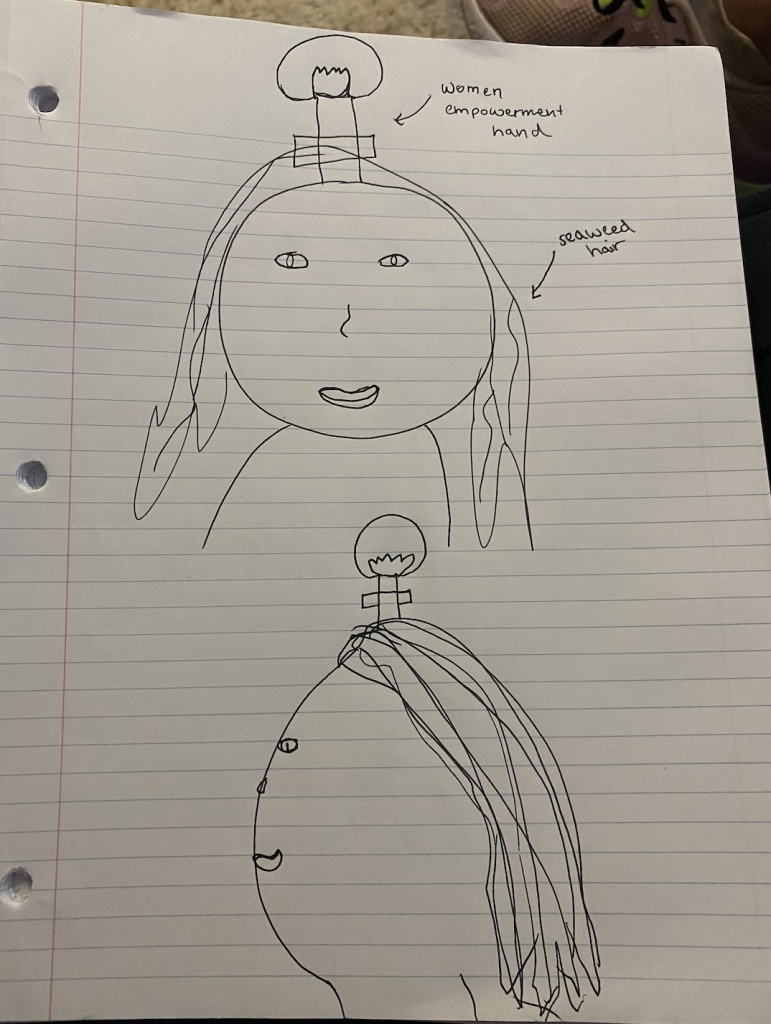
Month: September 2021
collages
Project 2 collage
Greenawald Collages:
Setting up a Peg Armature and Roughing in your Self-Portrait Bust
example of how to rough out proportions and form without getting too caught up in details
some useful general-to-specific head sculpting videos
Tip Toland Workshop — Sculpting a Clay Head
Images of Tip Toland’s artwork:
Art report. Vicky Liu. The Whistlers
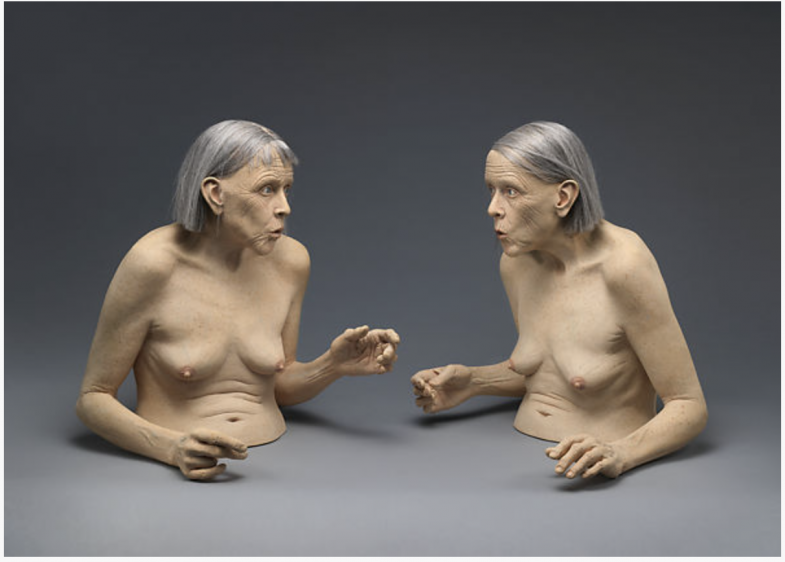
Immediate Response
The Whistlers, which is a sculpture by Tip Toland in 2005, leads me not only to see the beauty of old women but also to think about the deeper meaning hidden in details. When I first saw the sculpture, I was shocked by Tip Toland’s choice of representation, which are old women. Different from sculptures I used to see, which always represent the perfect body shape of young men and women, their “imperfect” old bodies and faces make me feel confused. I noticed the old women’s mouths first, which curled up in a similar wired way. The whole piece scared me at first, but it also put me in awe of life.
Objective Description
The whole sculpture is made up of two twin figures of naked old women facing each other. Both of them have obvious signs of old age. For example, short black and white hair, wrinkles on the face, sagging breasts and shriveled skin. Their actions and expressions are weird, too. The one on the left with front hair bent her back and raised her left hand. She put her right hand on the table with two fingers together pointing to the right. Her eyes were wide and her mouth curled up as if to speak. The left woman has almost the same expression as the woman on the right as if she were imitating her. Both her hands were at her waist, and her posture was a little bit awkward.
Technical Decisions
Two similar sculptures of old women facing each other, which gives viewers a feeling that the two women are communicating, makes me think deeper about the meaning of the sculpture. The interaction between two old people seems innocent. It was as if the old woman on the left was teaching the one on the right to whistle. Even though both of the old women have mature and old bodies, which even are awkward to move, their faces have childlike innocence and simplicity. The material of this sculpture is stoneware. It’s a hard, opaque, vitrified ceramic ware. It represents how old people’s skin looks perfectly. The movement of two old women is somewhere between harmonic and dissonant. Even though the author shows the detail of muscle, the fact that the characters are old and weak makes the whole piece more peaceful.
The work in the world
The Whistlers, like most of other works of Tip Toland, shows the image of the old. Tip Toland uses paint, encaustic technique and hair to create figures with “uncanny skin quality, utterly convincing hand gestures and eerily spontaneous facial expressions”.(Wikipedia) Tip Toland’s figurative sculptures are stunningly realistic and exquisite. Tantrum, one of her other works, describes the artist’s sane response to an insane world. Beauty Parlor, is about parents willingly being made the fools out of love for their children. Fool, is a portrait of the artist herself as a contemporary fool. Most of her works are about the elderly and children because they are too often weak and neglected. The feelings imparted by her sculptures make the viewer feel the same feelings in his or her life and elicit an emotional and empathetic response.
The story it tells
Tip Toland’s works have brought the form of sculpture of the elderly into people’s aesthetics. They remind us to see the waning beauty of life, to be moved by the fragility and innocence of human beings. They separate us from a single aesthetic and teach us to see a beautiful and good soul in decrepit bodies. In Tip Toland’s work, old age and innocence, destruction and rebirth were perfectly fused together. People are inspired to pay more attention and show more respect to the old and find a wider explanation of art.
Carter alvord- Poteous
I really enjoyed the documentary because the narrator talked about both science and art. Immediately, I began to think about a voyager, Christopher Columbus, who sketched many of his findings down in his personal journal. As he traveled to North America, he would sketch birds, rocks, shells, and almost any new species which he had not seen before. While his drawings purpose were for scientific purposes, I would still describe them as pieces of art. Without skillfully depicting and drawing each animal and organism adroitly, it would be hard for others to comprehend what the animals purpose was. Furthermore, I found Haeckel’s life story to be extremely intriguing. His battle between matter and religion was quite interesting. Moreover, I found the narrators description of society’s perception of sciences, and how Haeckel changed peoples perception of the world, and, in specific, water to be fascinating. Overall, I found the documentary exceedingly alluring and I enjoyed learning about how Haeckel used art to bring his scientific discoveries to life.
Carter Alvord- untitled sculpture piece
Tony Cragg
Immediate Response:
I find this sculpture to be extremely unorganized. It seems to be extremely sporadic and there is no certainty to its pattern. However, while the piece is chaotic, the materials used, and the way it’s sculpted, makes it exceedingly satisfying to view. In certain areas, the piece becomes narrow, while at other sections, it becomes very large and almost spherical. The piece, made out of stainless steel, almost looks to be made out of different slabs molded together in no specific order.
Objective Description:
First, I see a large steel structure. At the base, it starts in a small cylinder, until slowly shifting off to the right. Once it branches off to the right, it becomes almost like a small skipping stone that you would throw across the water. From there, it moves back to the left, with the same skipping stone shape. Then, for the majority of the sculpture it stays with an unpredictable pattern going back and forth until reaching it’s peak where it creates an awkward spherical shape. Overall, the sculpture, while sporadic, is extremely smooth and interesting to look at.
Technical Decisions:
the composition of this piece created by Tony Cragg is exceptionally dynamic. When starting from the base pedestal of the sculpture and moving upwards, your eyes sway back and forth as you follow the intrigue and almost unthought out path that Cragg has chosen to make. As a viewer, it keeps you both intrigued and entertained by the unruly path that the sculpture takes.
The work in the World:
In my opinion, this sculpture, which was entirely crafted out of steel, intrigues any veiwer. In turn, all of Cragg’s artwork uses one core medium. For some, the artist uses wood, plastic, or even Plexiglass to create extremely vivid and dynamic images. I feel as if Cragg likes the simplicity of single material sculptures because they don’t distract the viewer from the actual artwork being presented.
The Story It Tells:
I feel as if Cragg yearns to illustrate the unpredictable nature of life. Like his sculpture, life is remarkably erratic, and no matter what, you never know what may come your way. As you grow, there are sure to be bumps and obstacles along the way in which you must surpass. I feel as if Craggs dynamic and chaotic sculpture helps present that nothing is garuanteed.
Art report 1
To Twine, Janine Antoni
To Twine by Janine Antoni
Immediate Response:
When I first saw the sculpture to twine by Janine Antoni it was hard not to notice the complexity of the two spines woven together but together with the simplicity of the wall behind it and the setting it is on. When seeing the piece, it made me think of marriage. Marriage is the connection of two people intertwining their life together and connected the balance of the complexity and simplicity that marriage can be.
Objective Description:
This piece is made of two human spines intertwined together like two snakes would intertwine with each other. It is set on a cream carpet with a white background. The spines are very complex in nature and the sculpture shows that by showing where each disk would be and having the spines connect in the disks at the bottom end of the piece.
Technical Decisions:
The presentation of the sculpture sits on a white carpet in a bland white room. I believe that the specific method of Antoni presenting the sculpture like this is to strictly have the viewer focus on the two spines intertwined with each other but to also have the artist see the simplicity surrounding the complexity of the sculpture. I believe that “to twine’s composition is static in nature. The composition being static in nature impacted me as a viewer by having me directly focus on the two spines intertwined when first looking at the sculpture and strictly focusing on the beauty of it.
The Work in the World:
The only item in this sculpture is two spines. The association with the world that these two spines would have is that the spine is the backbone of every person in the world. The two spines coming together shows that people of the world can come together. The artwork relates with history because since the beginning of time people have always been mistreated and the artwork associates with the movement to put that behind and try and have everyone love each other and come together.
The Story it Tells:
The meaning of this sculpture is to show people that the world can run better and be much simpler if we came together in either marriage that correlates with my initial thoughts on the work and coming together as a world and loving each other. I arrived at these interpretations of the work because I believe that the white walls and white carpet are signs of simplicity and that the two spines coming together can be many people coming together. People could interpret this work as two people who were lost in the world coming together and living through the mess we call life together.
Nolan Springer
The film on radiolarians and Ernst Haeckel was very interesting. I enjoyed it and even learned some pretty cool facts. Radiolarians are part of the oceanic plankton. They are also over 500 million years old. Some cool things I found out about Haeckel’s work is that he had the theory way before Darwin that man came from ape. I also found it interesting that he enjoyed painting pictures of landscapes, especially rock forms. This film definitely made me think differently about the art and science relationship because if Haeckel wasn’t able to draw those images, who knows what would have happened.One major historical issue was Haeckel’s stem tree. He made a racial tree that put minorities at the bottom, with white people at the top. Doing some further digging, people believe his words may have helped with the Nazi’s rise. In today’s world, everyone knows that that was such a horrible thing to do. But to only single him out would be crazy. Many people back in his day believed these same things. You just wish that what everyone knows today would’ve been taught back then. You could argue that if this didn’t happen, Haeckel wouldn’t be known as he is today. Some issues that could come up are we don’t know just how accurate these drawings from hundreds of years ago truly are. Another obstacle is that he drew them in 2D. For our sculptures, we have to bring the object to life and make our best guesses as to how they would have looked. The thing I found the most interesting was the fact that they stumbled upon the organisms at the bottom of the Ocean. Crazy to think how big of a discovery that was, and makes you think what else has been discovered by being in the right place at the right time.
